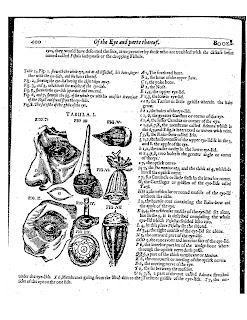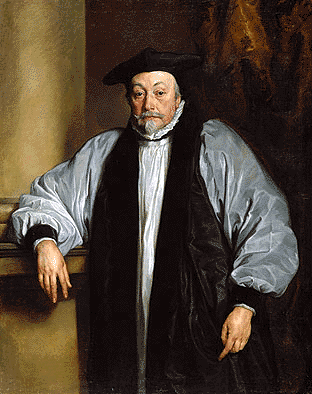 |
| Anne Hutchinson, Boston, State House Grounds |
Before the class moves too far away from the 1630s and 1640s, it is worth saying a few words about Anne Marbury Hutchinson (1591-1643) and the Antinomian Crisis (1636-1638) in Massachusetts Bay Colony.
Hutchinson was born in England, the daughter of an Anglican minister with strong Puritan leanings who was imprisoned and later placed under house arrest by the authorities. He educated his daughter well beyond what the era offered other women. After her marriage to William Hutchinson, she fell under the spell of a dynamic minister residing in nearby Boston, Lincolnshire, England. Regularly, the Hutchinsons travelled over twenty miles to hear John Cotton preach each Sunday, and they deeply mourned his 1633 forced departure for New England. Having given birth to her fourteenth child, Hutchinson and her family followed Cotton to the Bay Colony in 1634.
Having settled into her new home, Hutchinson resumed acting as midwife and spiritual advisor to local women. Her activities eventually morphed into hosting religious gatherings at her home, collecting some 70 devoted followers. At these events, she discussed theological matters, eventually reaching the conclusion that the concept of sanctification---the visible evidence that one might be of the elect---was a false doctrine and that ministers who preached it were leading saints astray in their religious devotions. Among her devotees were her brother-in-law minister John Wheelwright (1592-1679) and Governor Henry Vane (1613-1662). As Philip H. Round has argued, Hutchinson might have been drawing on an English tradition as a "prophetic woman," a custom that made her behavior aberrant in New England.
Tensions grew in the colony, reaching a tipping point in August, 1637, when a synod was convened and Hutchinson was brought before the authorities. Among those who questioned her during her church and her civil trials were John Winthrop, who had just defeated Vane for the governorship; Thomas Dudley, Deputy Governor and Anne Bradstreet's father; John Eliot, apostle to the Indians; John Cotton, minister at Boston; Thomas Shepard, minister at Cambridge; Thomas Weld, minister at Roxbury; and Hugh Peters, minister at Salem. These were the big intellectual guns of the Bay Colony, and as the transcripts make clear, Anne Hutchinson could not just hold her own during the back and forth over theological matters, she could actually talk them into silence. Cotton himself came under scrutiny from his brethren, and he eventually turned on Hutchinson during the trial.
Unfortunately, perhaps weary from the questioning, Hutchinson slipped up:
Hutchinson: . . . I bless the Lord, he hath let me see which was the clear ministry and which the wrong. Since that time I confess I have been more choice and he hath let me to distinguish between the voice of my beloved and the voice of Moses, the voice of John the Baptist and the voice of the antichrist, for all those voices are spoken of in scripture. Now if you do condemn me for speaking what in my conscience I know to be truth I must commit myself unto the Lord.
Mr. Nowell: How do you know that that was the spirit?
Hutchinson: How did Abraham know that it was God that bid him offer his son, being a breach of the sixth commandment?
Dep. Gov. Dudley: By an immediate voice.
Hutchinson: So to me by an immediate revelation.
Dudley: How! an immediate revelation.
Hutchinson: by the voice of his own spirit to my soul. I will give you another scripture, Jeremiah 46:27-28---out of which the Lord showed me what he would do for me and the rest of his servants. . . .
This spirit also forewarned Hutchinson that after she migrated to Massachusetts Bay she would be persecuted. As far as the Puritans were concerned, direct revelation from God ended with Christ's apostles, so to embrace, as she did, an "immediate revelation" exposed her to charges of heresy. As Winthrop recorded in his journal, though her errors were "clearly confuted, but yet she held her own." Hutchinson was admonished, then excommunicated, then banished from the Bay Colony. Many of her followers examined and either returned to the fold or followed Hutchinson into exile.
The Antinomian Controversy spread through the colony, dividing towns, churches, even families. It forced the Congregationalists to recognize that limits must be placed on individual belief, lest the colony disintegrate into factions. As tensions rose, ordinances were passed ordering the seizure of any guns owned by Hutchinson's followers, the narrowly elected Governor Winthrop found himself denied an honor guard, and the Hutchinsonians apparently resisted waging the Pequot War.
 |
| Split Rock, Bronx, New York, near where the Hutchinsons died |
Much to the authorities' dismay, after her banishment Hutchinson found refuge in the lately established colony of Rhode Island, founded by another Bay Colony banishee, Roger Williams. There, Anne Hutchinson "was delivered of a monstrous birth," the remains of which were examined as evidence of her errors. (None of the authorities seem to have taken notice that she was 47 years old at the time of her miscarriage.) Governor Winthrop reports in his diary that an earthquake struck Rhode Island, and the Hutchinsonians, having been given over to "strange delusions," "boasted" that "the Holy Ghost did shake it [the house] in coming down upon them, as He did upon the apostles." By 1643, Hutchinson was living with the Dutch in New Amsterdam (i.e., New York), where she and a number of family members (with the exception of the one daughter pictured with her above) were slaughtered by Indians. Noting the event in his journal, Winthrop comments that "These people had cast off ordinances and churches, and now at last their own people. . . ." One might consider the biblical implications of this statement.
Hutchinson's descendants include three presidents (FDR and the two Bushes), Lincoln senate opponent Stephen Douglas, Mitt Romney, two Supreme Court Justices, author Oliver Wendell Holmes, historian Mary Beth Norton, and royal governor during the American Revolution, Thomas Hutchinson. In 1987, Governor Michael Dukakis officially revoked Governor Winthrop's order of banishment.
Three trial transcripts survive from the Antinomian Crisis; they and other documents have been collected by historian David D. Hall in
The Antinomian Controversy, 1636-1638: A Documentary History (2nd edition, 1990). A detailed history of the crisis is Michel P. Winship's
Making Heretics : Militant Protestantism and Free Grace in Massachusetts, 1636-1641 (2002). Hutchinson never published her beliefs, and thus her words were recorded by her adversaries and come down to us through the lens of their vision. In spite of her persecutors' view of her, the transcripts reveal Hutchinson to have been a feisty woman with a deep biblical knowledge of her faith.
 Session One: Issues in Puritanism
Session One: Issues in Puritanism



.jpg)












